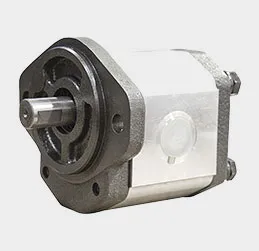Body Panel Fabrication Techniques for Automotive Manufacturing Efficiency
The Art and Science of Body Panel Stamping in Automotive Manufacturing
In the realm of automotive manufacturing, body panel stamping stands as a critical process that shapes the very foundation of vehicle design and production. This intricate procedure involves transforming sheets of metal into the various panels that compose a vehicle’s body, including the doors, hoods, fenders, and roofs. Body panel stamping not only ensures structural integrity and aesthetic appeal but also plays a vital role in the overall efficiency and sustainability of manufacturing processes.
At the heart of body panel stamping is the use of advanced machinery and technology, which has evolved significantly over the years
. Initially, stamping operations relied heavily on manual labor and rudimentary machines, but today’s state-of-the-art equipment employs hydraulic and mechanical presses that exert immense force to shape metal accurately. Computer Numerical Control (CNC) technology has revolutionized the precision of these operations, enabling manufacturers to achieve highly detailed and consistent outcomes with minimal waste.The stamping process begins with design, where engineers create detailed blueprints of each panel. This stage involves sophisticated software that allows for 3D modeling and simulation, helping to anticipate how the metal will behave under pressure. Once the designs are finalized, dies are fabricated—the specialized tools used in the stamping process. These dies, often made from high-grade steel, are engineered to withstand the immense pressures involved in transforming flat metal sheets into complex shapes.
The stamping operation itself involves placing a sheet of metal into the press, where it is cut and formed into the desired shape. This process can include multiple stages, including blanking (cutting the metal), forming (shaping the metal), and trimming (removing excess material). High-speed stamping lines can produce thousands of panels each day, making this method highly efficient and cost-effective for large-scale production.
body panel stamping

A significant advantage of modern body panel stamping is its ability to enhance vehicle designs while adhering to stringent safety and environmental standards. Advanced materials, such as high-strength steel and aluminum alloys, are commonly used in stamping processes to reduce weight while improving strength and safety ratings. Additionally, manufacturers are increasingly focusing on sustainable practices, utilizing techniques that minimize waste and energy consumption. Some facilities have adopted practices such as recycling scrap metal and optimizing their energy sources, contributing to the overall reduction of their carbon footprint.
Moreover, innovations in stamping technology are continually emerging. For instance, the integration of artificial intelligence and machine learning in predictive maintenance helps manufacturers anticipate equipment failures before they occur, thus ensuring uninterrupted production. Moreover, 3D printing is being explored for creating dies, potentially reducing lead times and costs associated with traditional die manufacturing.
The significance of body panel stamping extends beyond mere production; it plays an integral role in shaping the consumer experience. Well-stamped panels not only contribute to a vehicle’s aesthetic high quality but also affect its aerodynamics, safety, and overall performance on the road. As consumers become increasingly discerning about vehicle quality and sustainability, manufacturers must keep pace with innovations in stamping technology to meet evolving demands.
In conclusion, body panel stamping is a cornerstone of automotive manufacturing, blending art and engineering to create vehicles that are not only functional but also visually appealing. As technology continues to advance, the potential for further improvements in efficiency, sustainability, and design are boundless, paving the way for the next generation of vehicles that will captivate consumers while minimizing their environmental impact.
-
Top Extras Casting Solutions Die Casting and Sand Casting Experts High-Quality Casting and Die Casting ServicesNewsJun.10,2025
-
Top SS Casting Manufacturer Aluminum Die Casting Manufacturer China Precision Die Casting Company SupplierNewsJun.10,2025
-
High-Quality Brass Casting Sand for Precision Sand Casting Brass at HomeNewsJun.10,2025
-
Affordable Aluminum Sand Casting Solutions Custom PartsNewsJun.09,2025
-
High-Quality China Sand Casting Services Cost-Effective & ReliableNewsJun.09,2025
-
Premium Hot Stamping Parts Durable Plastic Decor SolutionsNewsJun.09,2025















